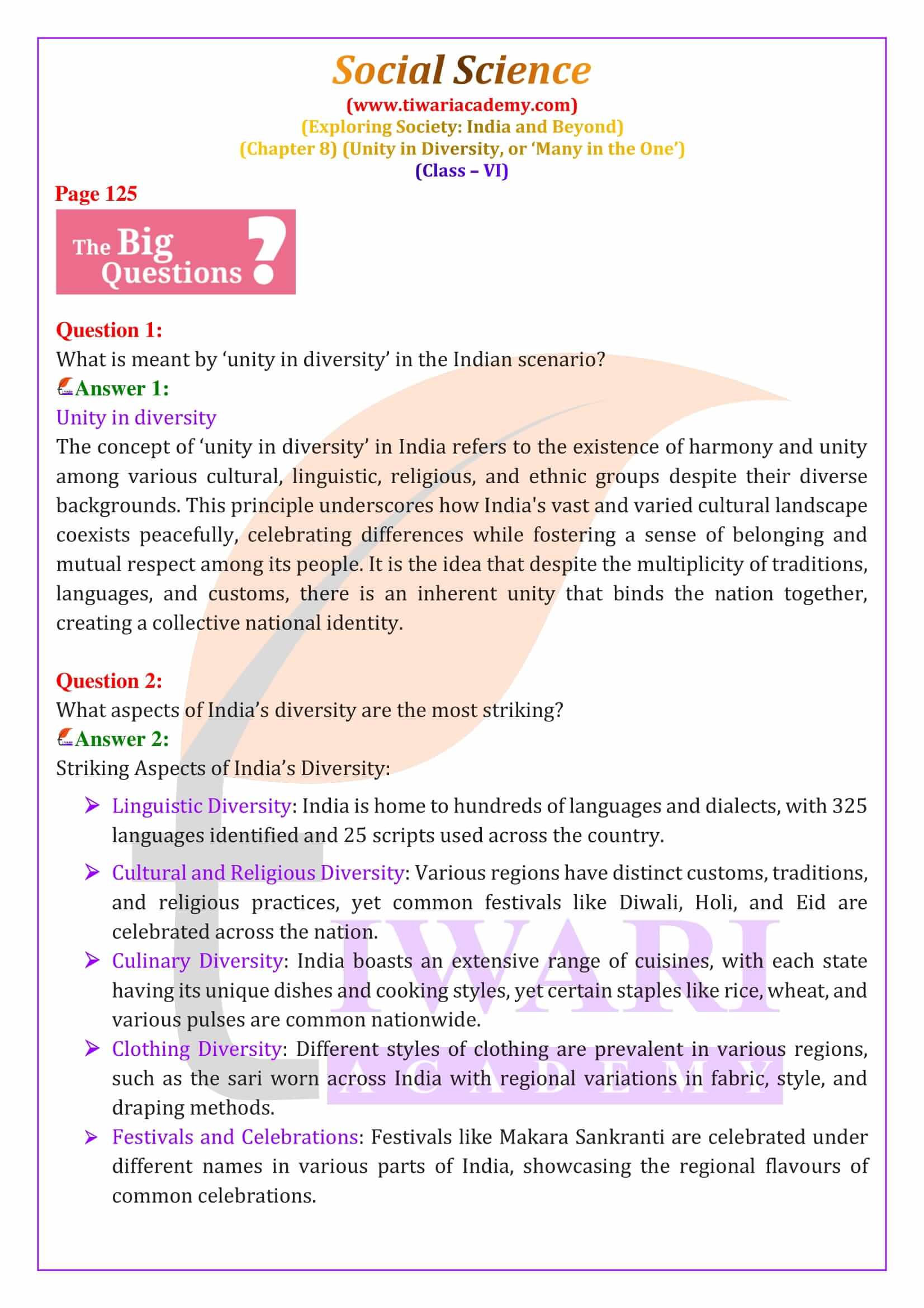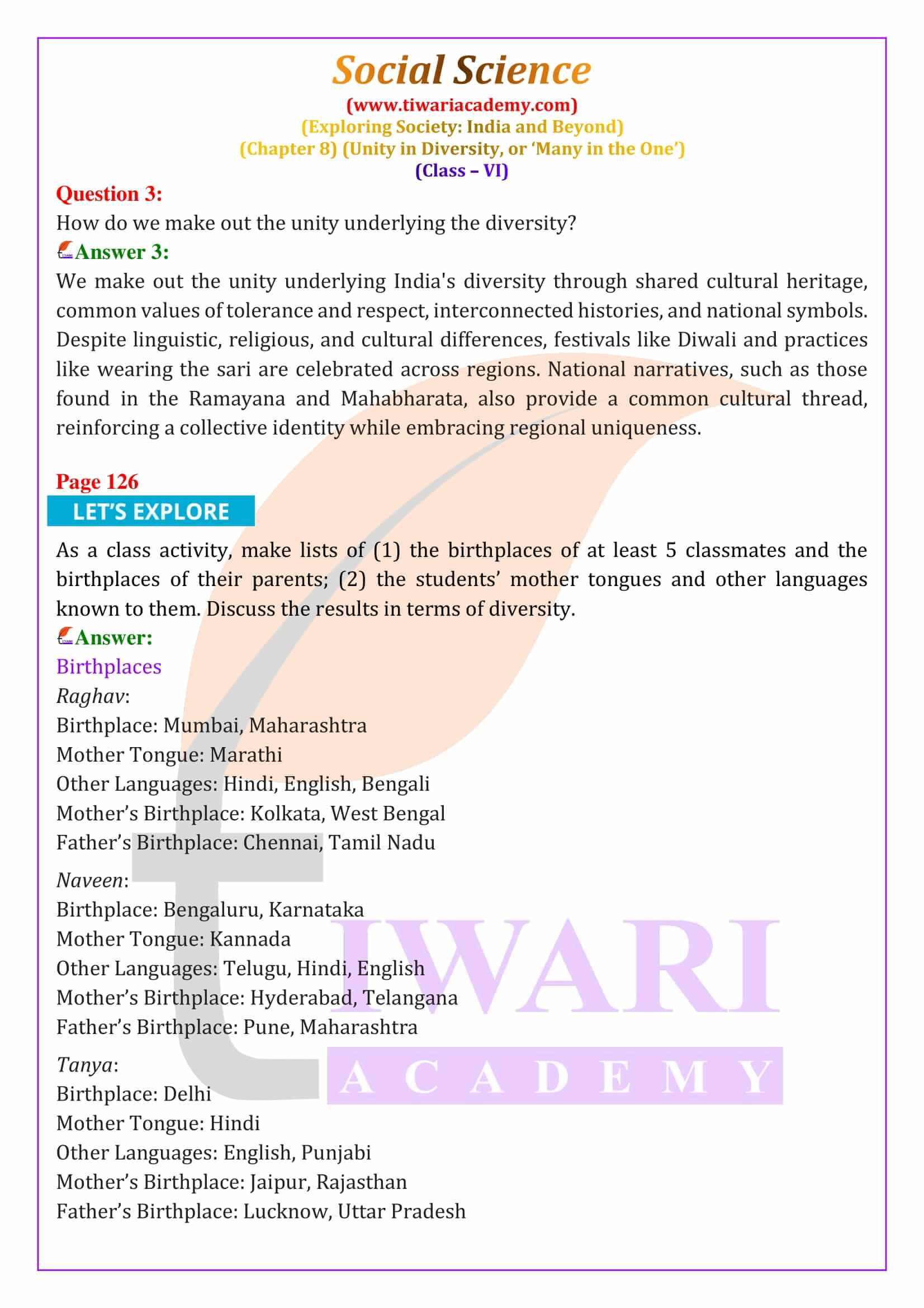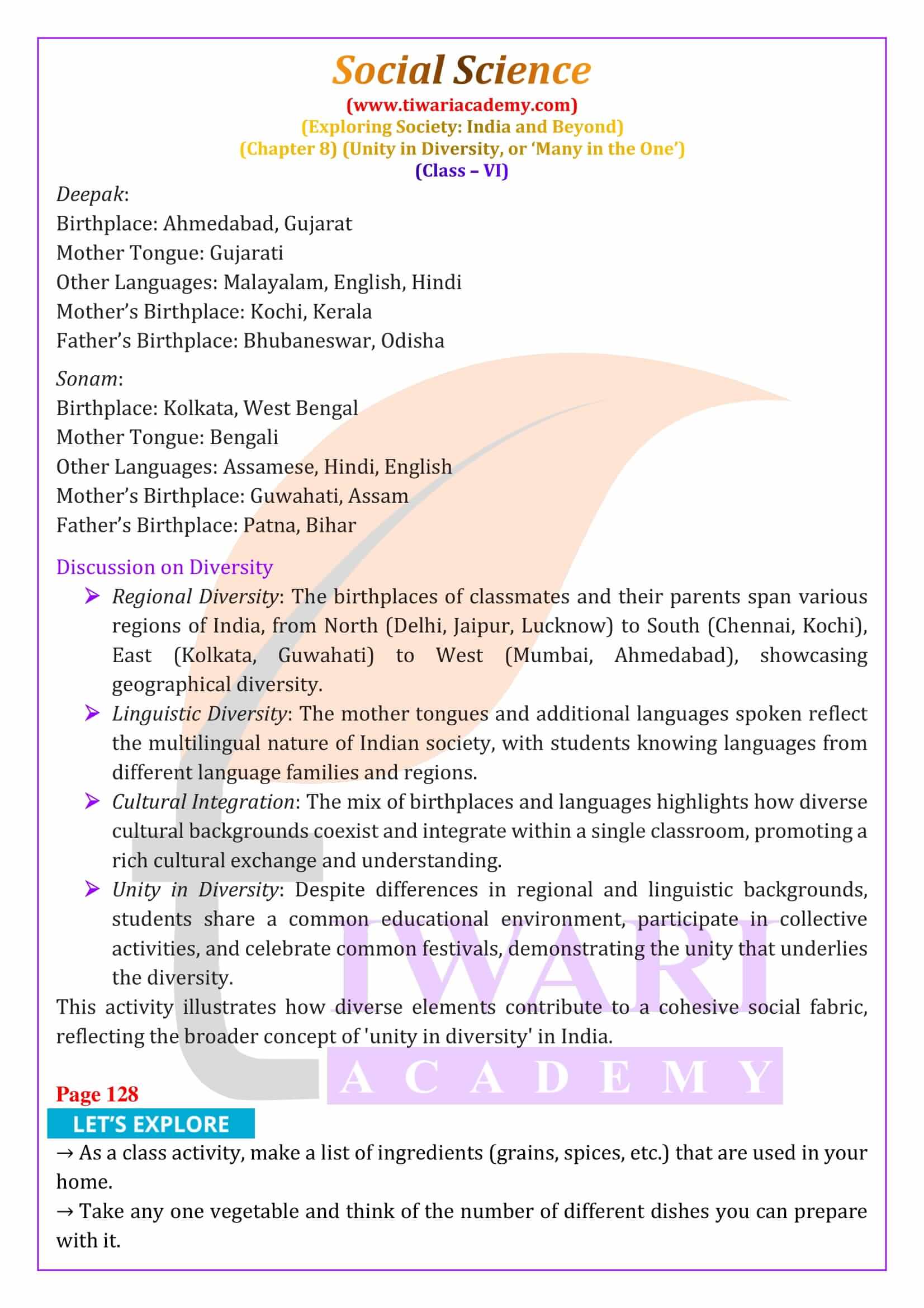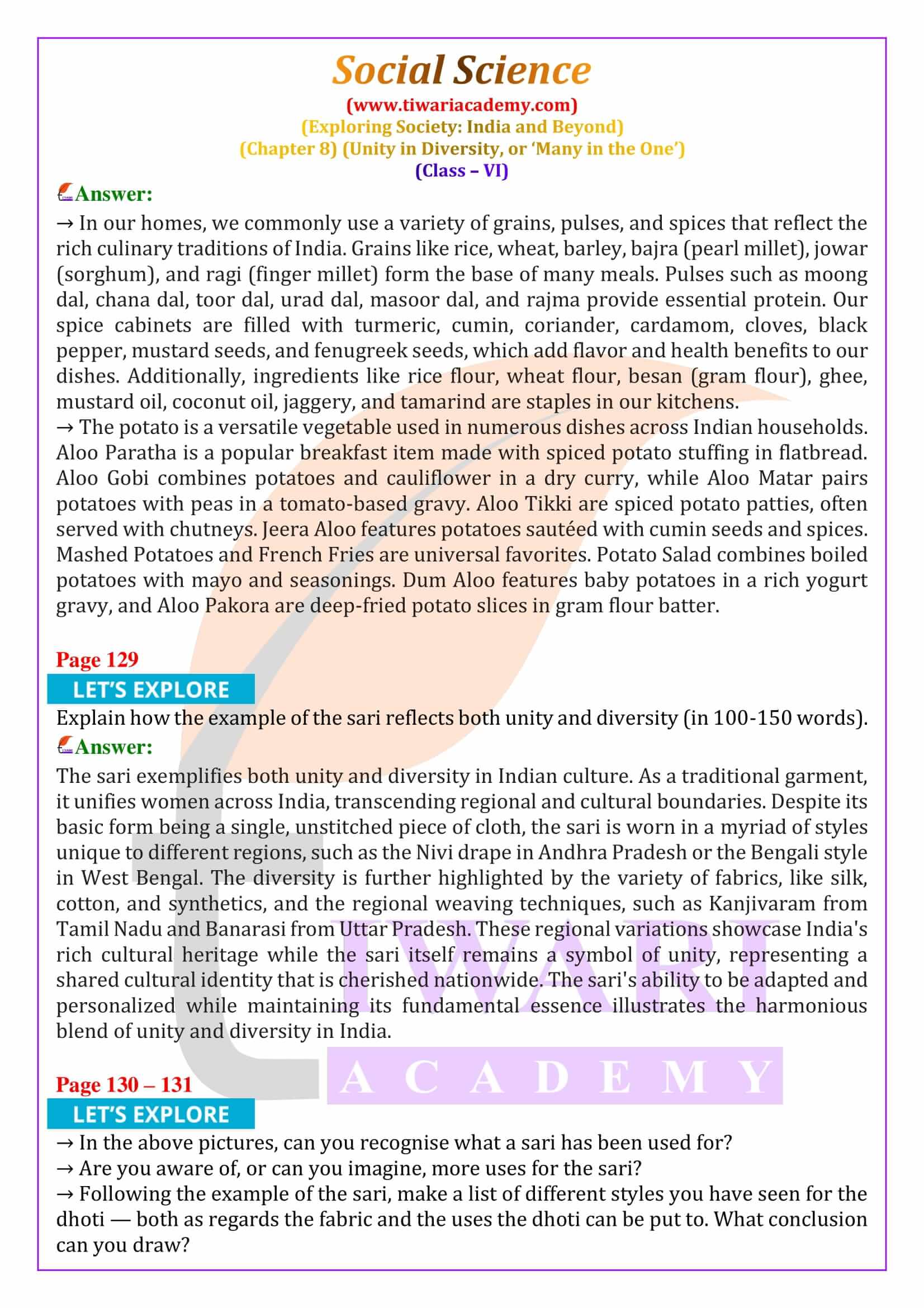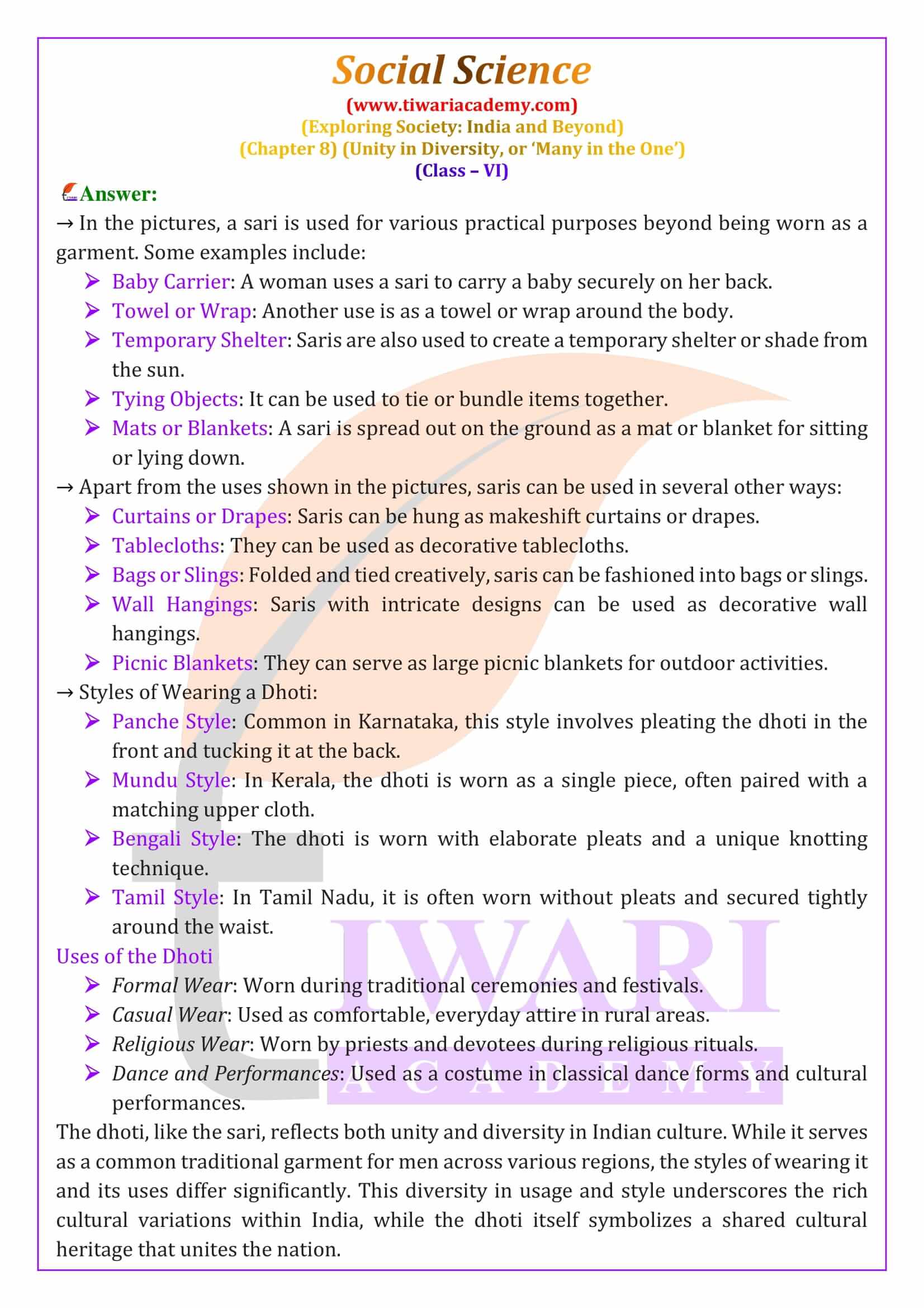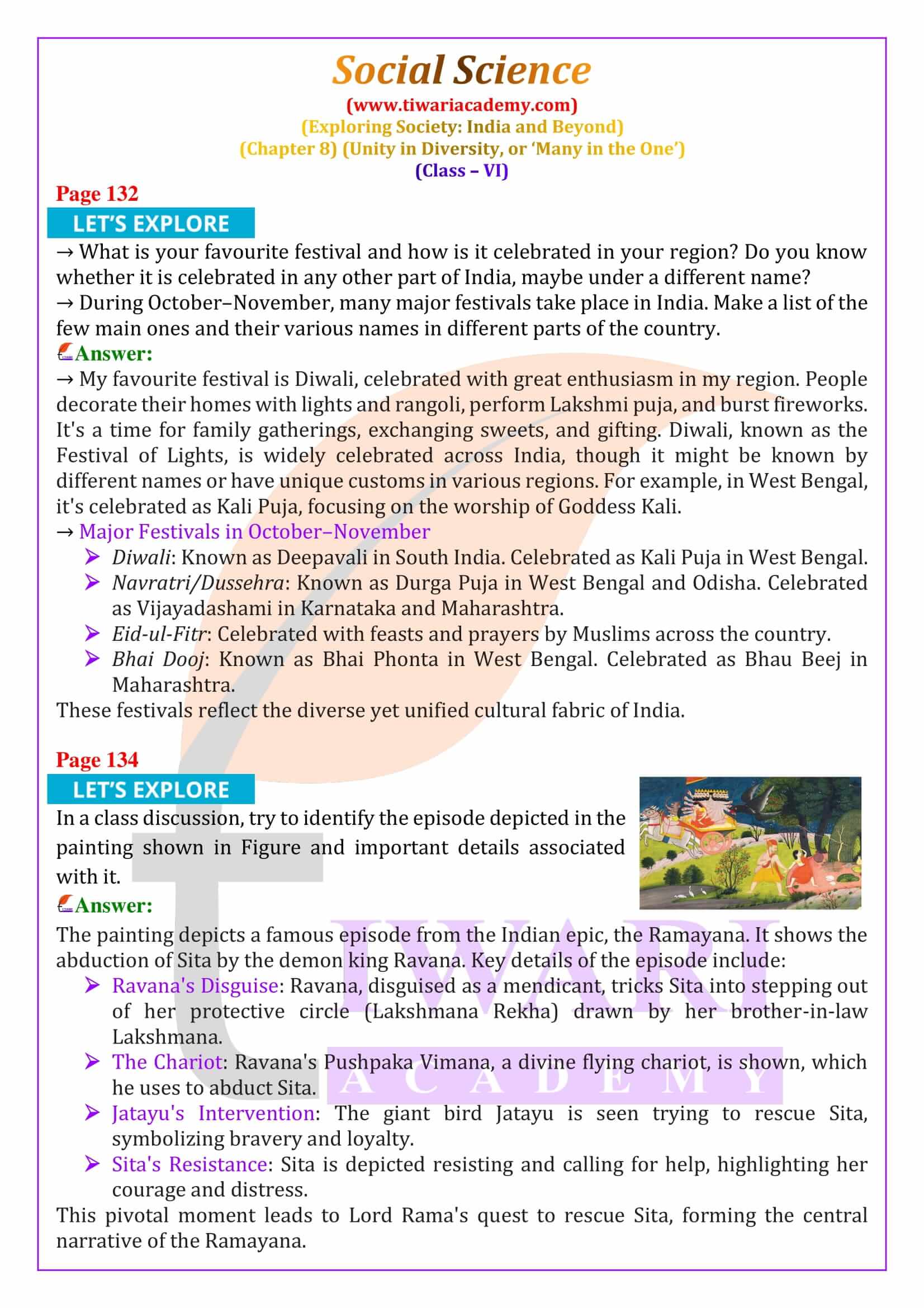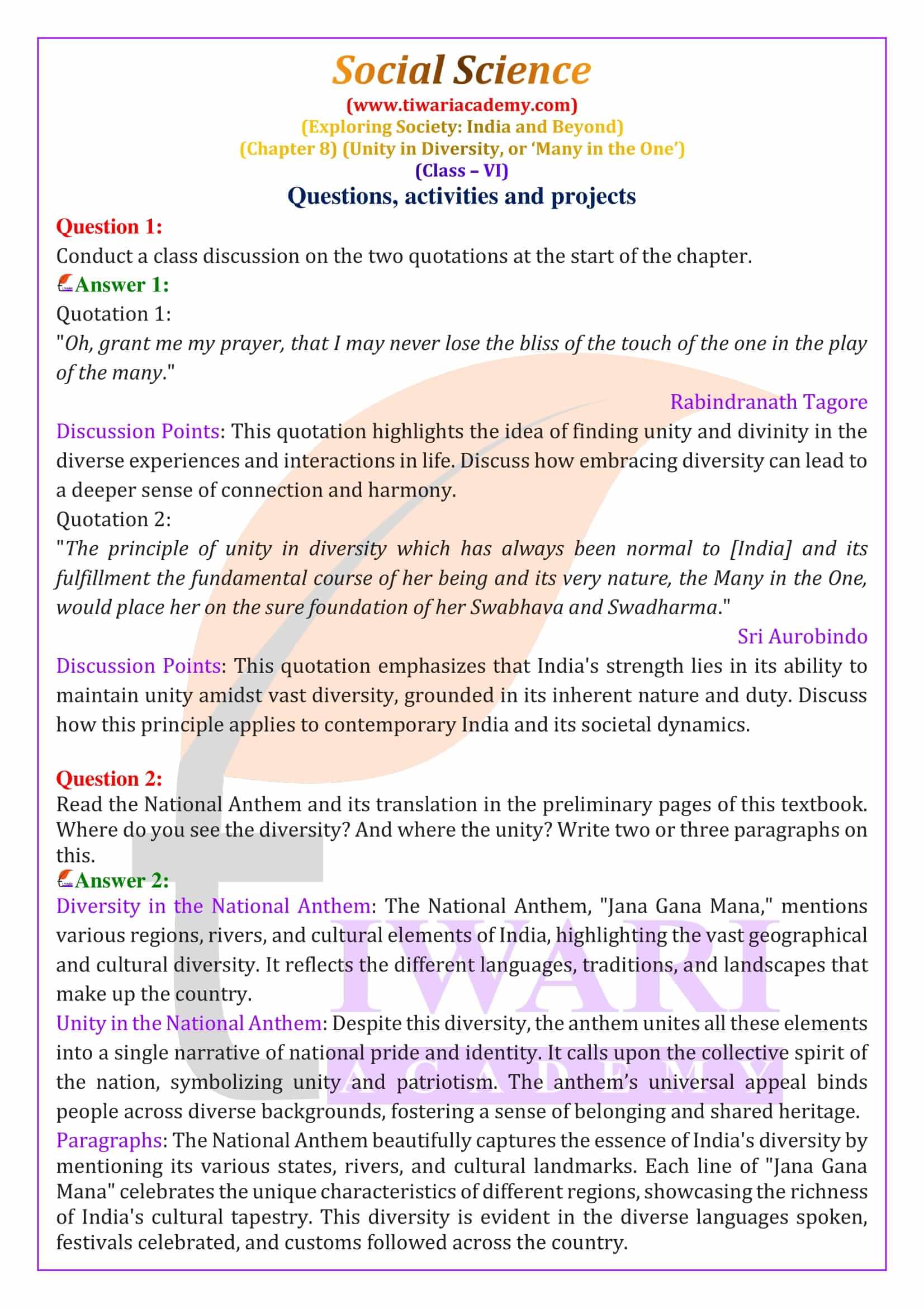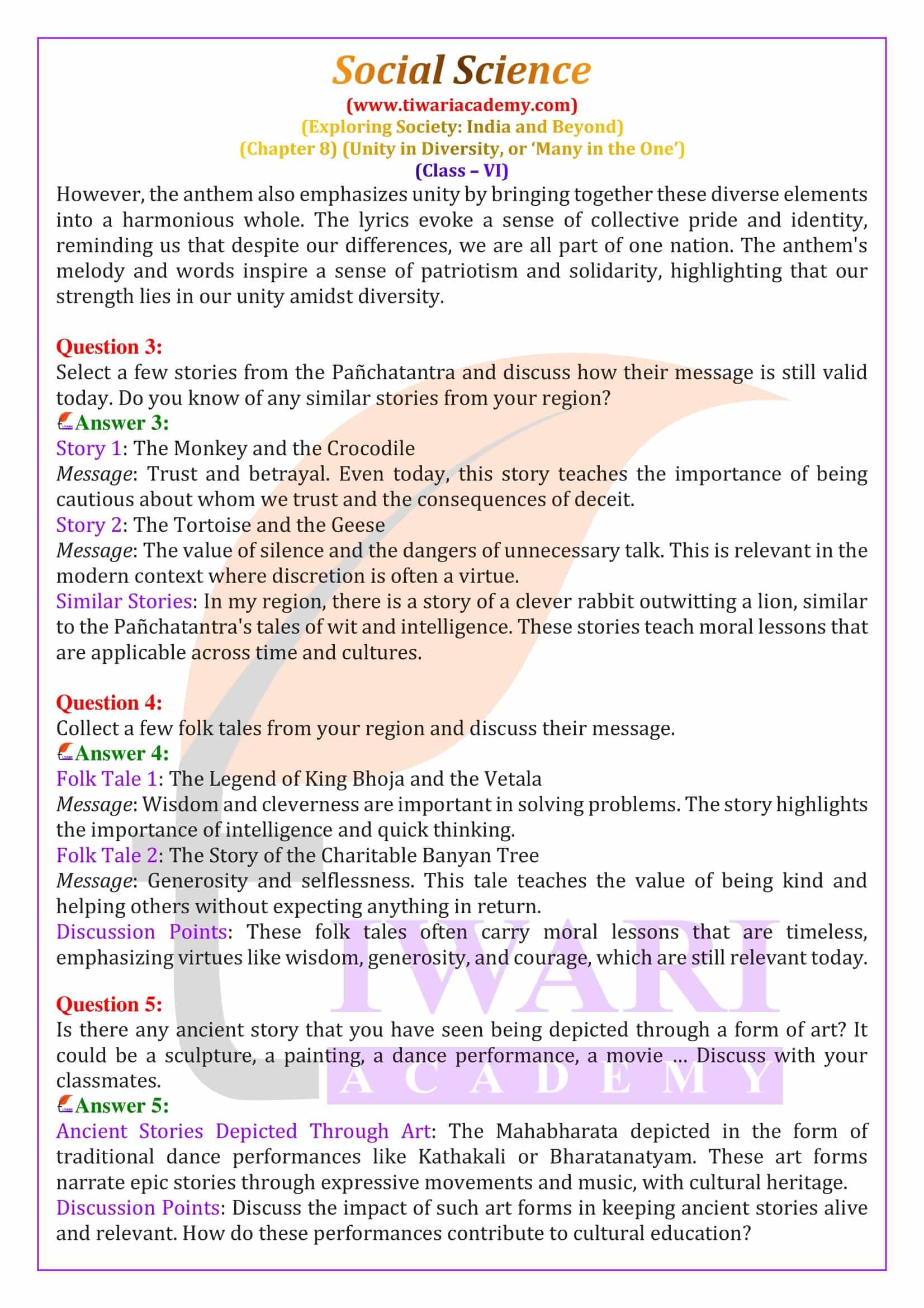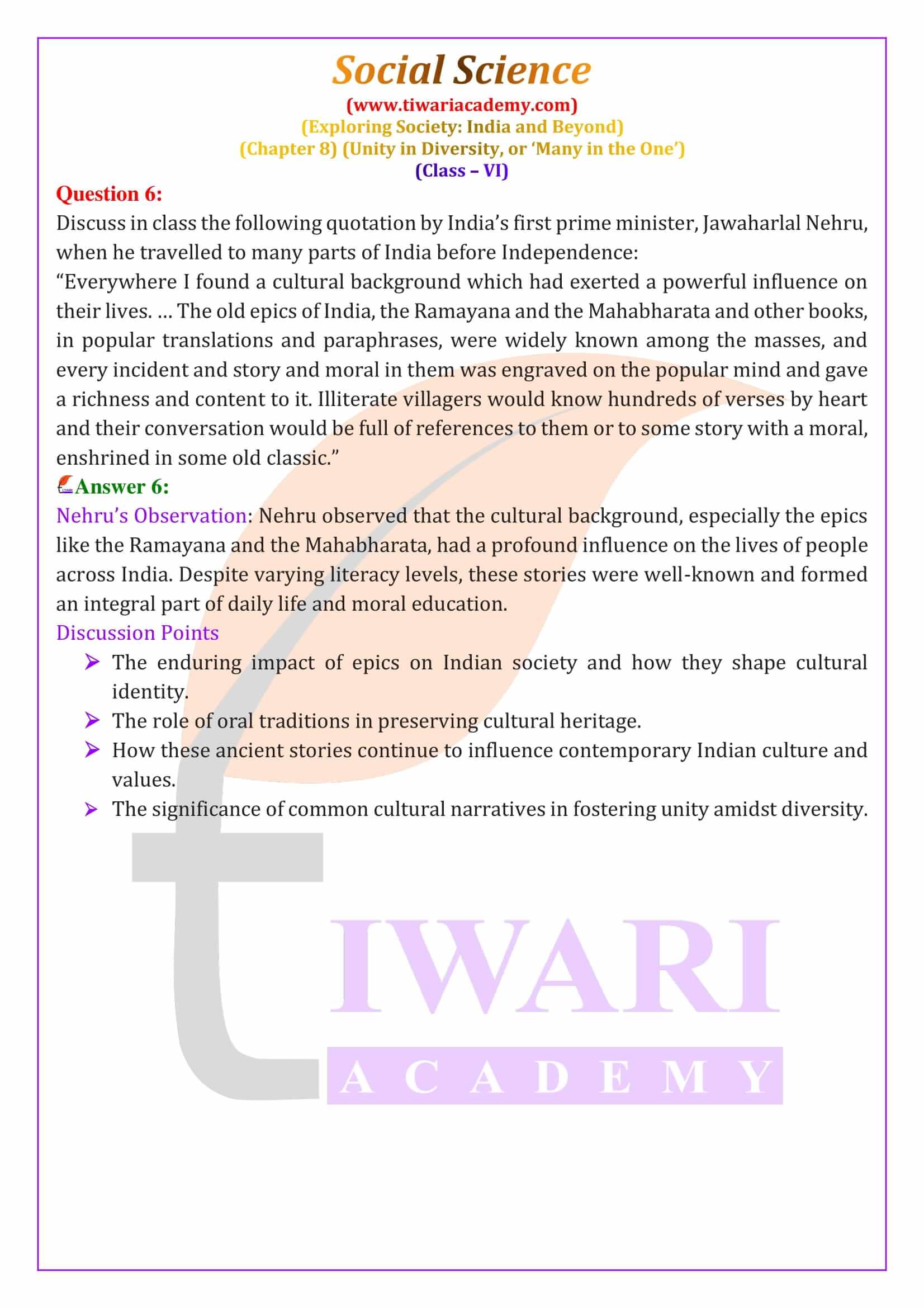NCERT Solutions for Class 6 Social Science Chapter 8 Unity in Diversity, or Many in the One updated for academic session 2025-26. The Question Answers of Class 6 Social Science Chapter 8 Exploring Society – India and Beyond India Beyond in History Section for exercises solution are given here.
Class 6 Social Science Chapter 8 Unity in Diversity Question Answers
Unity in Diversity, or ‘Many in the One’
India is a country known for its vast diversity. This chapter, “Unity in Diversity, or Many in the One,” explores how different aspects of Indian culture, tradition, and society come together to form a unified nation. Despite the numerous languages, foods, clothing styles, festivals, and more, there is a strong sense of unity that binds the country together. This unity is what makes India unique, showcasing how different elements can coexist harmoniously, creating a rich and vibrant culture that is admired worldwide.
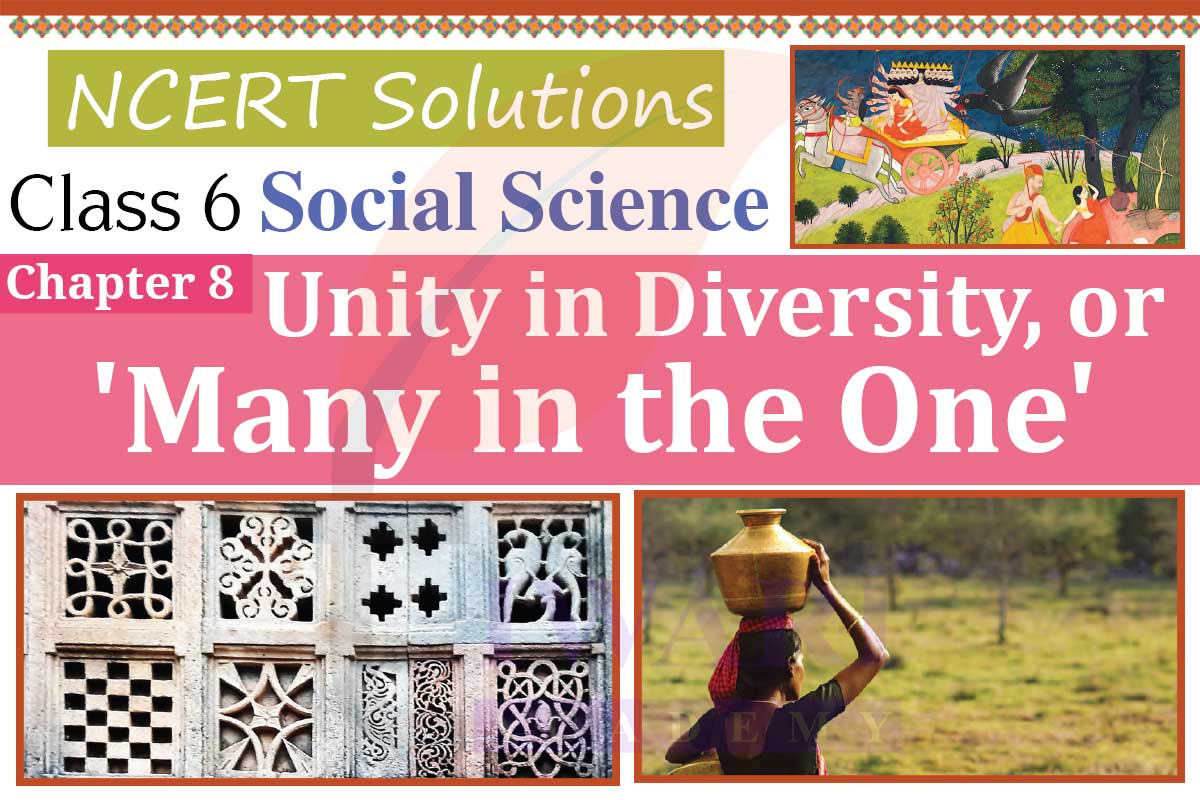
The Rich Diversity of India
When you travel across India, you notice the diversity in landscapes, languages, clothing, and food. From north to south and east to west, India is like a patchwork quilt made up of various colors and patterns. There are over 4,600 communities and 325 languages in India, according to a survey by the Anthropological Survey of India. Despite these differences, there is a sense of belonging and oneness among the people. This rich diversity is a reflection of India’s historical and cultural evolution, which has embraced various influences while maintaining a unique identity.
The Unity in Indian Cuisine
Indian cuisine is as diverse as its people. Every region has its own special dishes, yet certain ingredients like rice, wheat, and various pulses are common across the country. Spices like turmeric, cumin, and cardamom are used in almost every Indian household. Despite the variety of dishes prepared, the basic ingredients often remain the same, symbolizing the unity in Indian food culture. This variety within a shared foundation is a perfect example of how unity and diversity coexist in India.
Traditional Indian Textiles and Clothing
India’s clothing traditions are another reflection of its diversity. Different regions have their own styles of clothing, such as the sari, which is worn in various ways across the country. Whether it is silk saris from Kanjivaram or cotton saris from Bengal, each region has its own distinct style, yet the sari remains a common dress. This shows how a single piece of cloth can represent both the unity and diversity of Indian culture. The variety in textiles and the methods of wearing them highlight the creative expressions of different communities while maintaining a shared cultural thread.
Festivals Celebrating Unity and Diversity
India is a land of festivals, and each festival reflects the cultural diversity of the region where it is celebrated. However, many festivals, like Makara Sankranti, are celebrated across the country under different names and in different ways. This highlights the shared cultural heritage that unites the country despite regional differences. Festivals bring people together, fostering a sense of community and shared joy, which is an essential part of India’s unity in diversity.
The Shared Heritage of Indian Epics
Indian literature, particularly the epics like the Ramayana and the Mahabharata, offers another example of unity in diversity. These stories have been told and retold in various languages and versions across the country, each community adding its own touch while keeping the core narrative intact. The epics have traveled far beyond India’s borders, influencing cultures in Southeast Asia and beyond. This shared literary heritage connects people across regions and generations, reinforcing the unity that exists within India’s diversity.
Celebrating Diversity as a Strength
In conclusion, Indian culture is a celebration of diversity, but it is also a testament to the underlying unity that binds this diversity together. Whether through food, clothing, festivals, or literature, the idea of “many in the one” is evident throughout Indian society. This unity in diversity is what makes India strong and vibrant, allowing different cultures and traditions to coexist and enrich each other. It teaches us that diversity is not something to be feared, but something to be celebrated as it adds richness to our collective experience.

